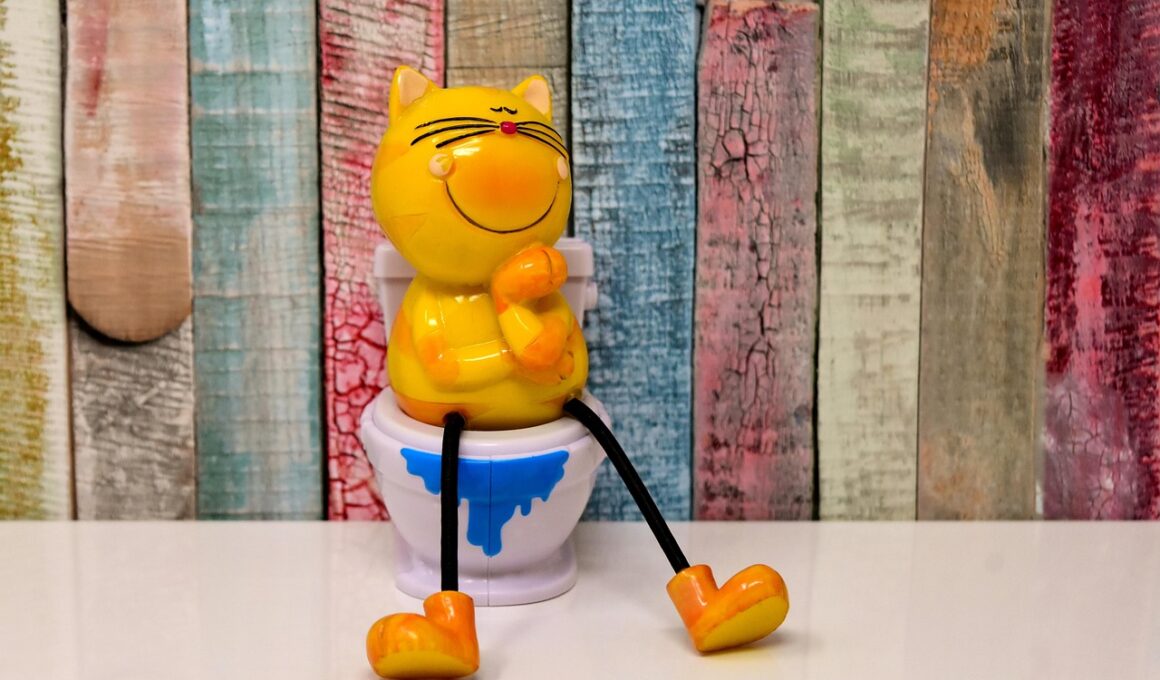Litter Box Safety and Hygiene in Multi-Cat Environments
Keeping a clean and safe environment for multiple cats not only promotes their health but also their overall happiness. One significant aspect of maintaining such an environment is ensuring that the litter box is clean, accessible, and hygienic. In a multi-cat household, it is crucial to have enough litter boxes; the general guideline is one box per cat, plus one extra. This allows each cat to have their designated space, reducing territorial conflicts and promoting positive interactions. Regular maintenance involves scooping the litter at least once a day and changing it entirely every week. This cleanliness helps to prevent bacterial growth and odors that can arise from waste. When selecting a location for your litter boxes, choose spots that are quiet and away from each cat’s food and water. This helps ensure that cats do not feel anxious while using them. Additionally, consider using litter boxes with low sides for easy access. For some older or disabled cats, high-sided boxes can become a hurdle, leading to accidents outside of the box. Ensuring every cat feels safe when using the litter box is essential for maintaining their trust and comfort.
Another critical component of litter box hygiene is the type of litter being used. There are several options available, ranging from clumping clay to natural paper-based materials. Many cat owners find that clumping litters make cleaning easier, as they allow for quick removal of waste. However, some cats may be sensitive to certain types of litter, which can lead to avoidance behavior. It’s essential to monitor your cats’ reactions to different litters. If you notice any signs of stress or refusal to use the box, consider experimenting with a few different types of litter to identify what works best for each cat. Further, consider maintaining a consistent routine for litter changing and box cleaning. Cats thrive on routine, and abrupt changes in their environment can lead to stress or undesirable behaviors. Adding an additional box can be a great solution if there is a noticeable change in your cats’ litter box habits, such as more accidents around the house. Making adjustments will ensure comfort and confidence in your cats when using their little boxes, preventing any behavioral issues in the household.
Managing Multiple Cat Personalities for Litter Box Use
When dealing with multiple cats, understanding their personalities plays a vital role in litter box usage. Different cats have varying comfort levels with sharing their space, including litter boxes. Some cats may not mind sharing, while others can be more territorial over their areas. Observing their behavior will help you determine if all cats can comfortably use the same box or if you need additional ones. Establishing a hierarchy is another crucial aspect. This behavior can mean that dominant cats may prevent others from accessing the litter box. Always ensure that the most submissive cat has access to a litter box without interference. If you notice any bullying behaviors, try to reposition the boxes to create separate zones for each cat. Closing off a cat from a litter box can create anxiety or lead to inappropriate elimination across the household. Keeping an eye on how your cats interact will help you create an appropriate environment that promotes trust and comfort. Also, ensure enough escape routes in the area around the litter boxes, allowing scared or anxious cats to have a way out when needed.
One often overlooked factor that can affect litter box use in multi-cat households is the cleanliness of the box itself. Cats are naturally clean animals, and they can quickly become discouraged from using a dirty litter box. Therefore, regularly cleaning your litter boxes is vital to keeping your cats content. Aside from daily scooping, ensure that the litter boxes are thoroughly washed with mild soap and water periodically to remove any residual odors or stains. This is especially important if you’re using a non-clumping or biodegradable litter, which can trap moisture and odors more than clumping litter. Also, consider the style of the litter box. Some cats prefer covered boxes for privacy, while others may feel trapped inside. Providing a variety of box styles can encourage all cats to use the boxes more willingly. Additionally, locating the boxes in different areas around your home will prevent any tension and allow each cat to find a box nearby. This distributes the use of the boxes and minimizes areas where one cat may dominate, leading to comfort in using the facilities without the risk of a territorial dispute.
Identifying Health Issues Through Litter Box Behavior
Monitoring your cats’ litter box habits is not just about hygiene; it also serves as an essential health check. Any abrupt changes in their elimination patterns can indicate underlying health problems. For example, straining to urinate or blood in urine, changes in the frequency of use, or any signs of discomfort while using the litter box should be addressed immediately. These could signal urinary tract infections or other health concerns that require veterinary attention. Additionally, excessive avoiding of the litter box can be a sign of stress, anxiety, or medical issues such as kidney problems. Keeping a journal of each cat’s litter box habits can help you detect patterns or issues over time. If one cat has consistent trouble or starts using the box more frequently than normal, seek advice from a veterinarian. Furthermore, once health problems are resolved, consider enriching their environment to reduce future stressors that may lead to litter box avoidance. This could help improve their comfort levels in multi-cat settings, easing their challenges when using shared litter boxes.
In multi-cat households, providing a stress-free environment is critical for maintaining good litter box hygiene. Stress can lead to poor litter box habits, resulting in accidents around the house or behavioral issues. Consider introducing more vertical space, like cat trees or shelves, which allows the cats to feel secure and establish their territory visually. Giving them plenty of enrichment opportunities, like interactive toys or varied playtime can also keep them mentally stimulated and more relaxed. Furthermore, if you are bringing a new cat into the household, it is essential to introduce them gradually. This slow introduction allows all cats to adjust to one another without creating a sense of competition or stress for resources, including litter boxes. Each cat should be given their own space to retreat and feel safe. The combination of a clean environment, ample resources, and gradual introductions works synergistically to foster a peaceful multi-cat household. Maintaining these practices ensures that all cats use the litter box comfortably and appropriately, enhancing their wellbeing and overall health.
Finally, keeping your multi-cat environment clean also extends beyond the litter boxes themselves and includes general cleanliness throughout the home. Frequent vacuuming and surface cleaning can mitigate the spread of cat litter tracked throughout your home. Consider using mats around the litter box area that are designed to trap litter. These mats can help minimize mess and simplify cleanup, allowing for a more organized area. Additionally, regularly inspecting and washing any surfaces where cats frequent will help maintain a clean environment. Using air purifiers can also increase quality indoor air, reducing odors and creating a fresh, stress-free environment. By maintaining a general cleaning schedule that complements your litter box care, you establish a routine that benefits your cats and keeps their areas free from health risks. In summary, cleanliness, litter box accessibility, and proper monitoring of each cat’s habits are key elements for fostering safety and hygiene in a multi-cat household. With these strategies in place, you can create a happy and healthy space for your beloved feline companions.
💡 This is the last paragraph which wraps up important points with emphasis on litter box safety and hygiene.


